COBURG DRIVE-IN
155 NEWLANDS ROAD COBURG, MERRI-BEK CITY
-
Add to tour
You must log in to do that.
-
Share
-
Shortlist place
You must log in to do that.
- Download report



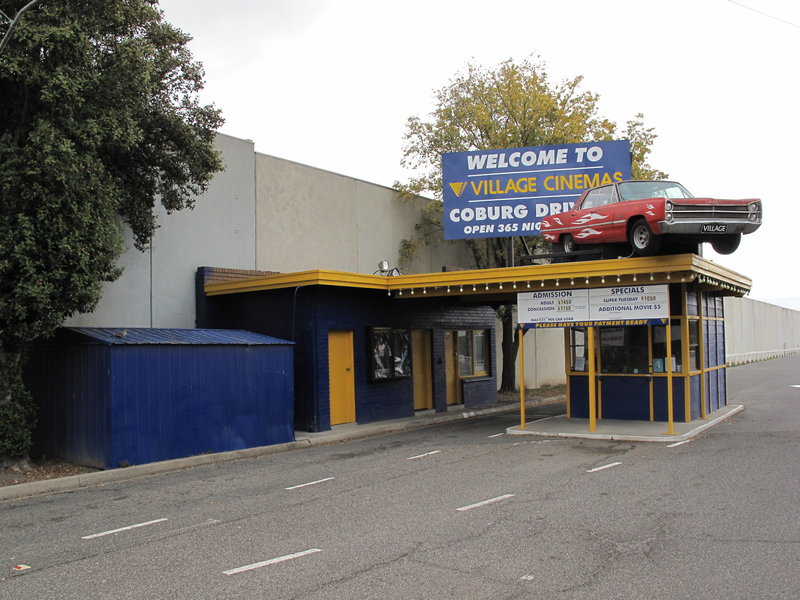
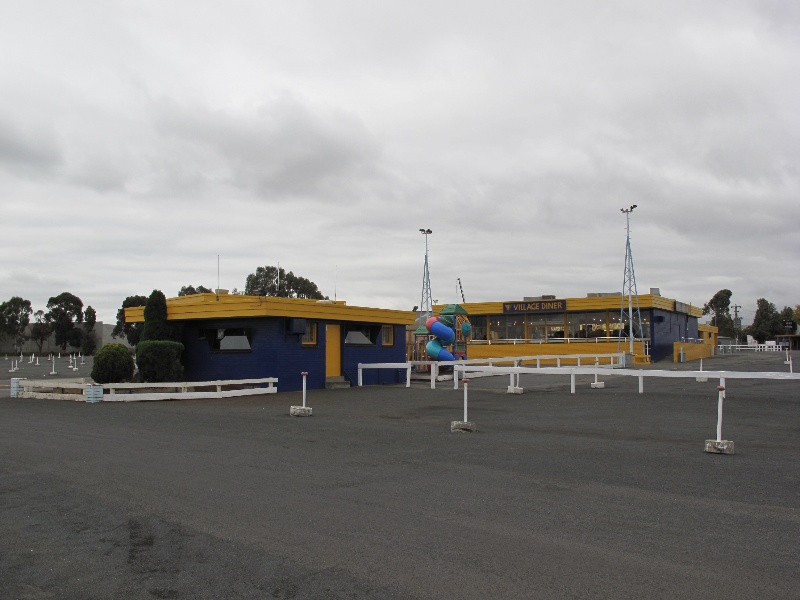
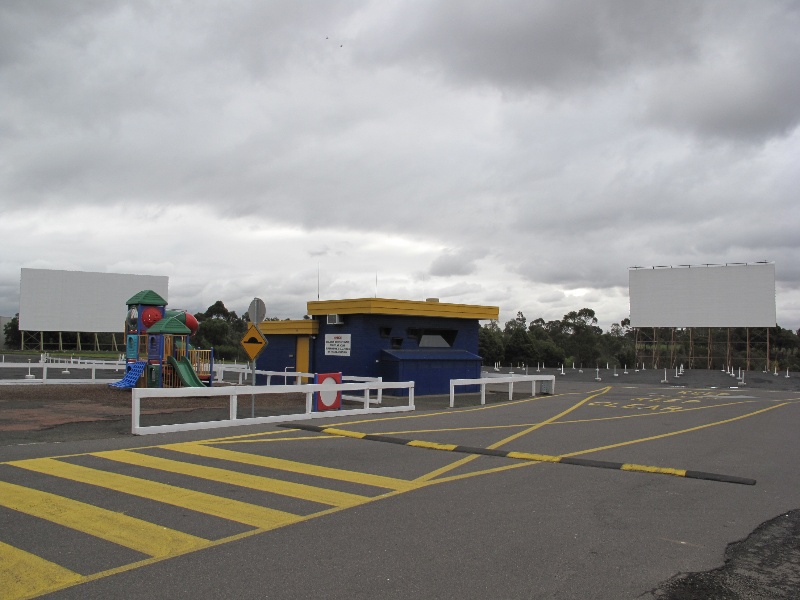



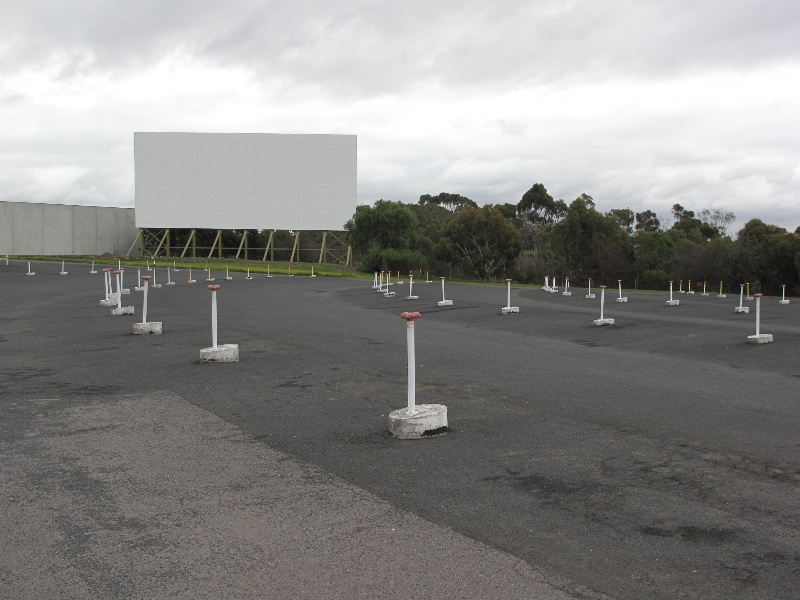

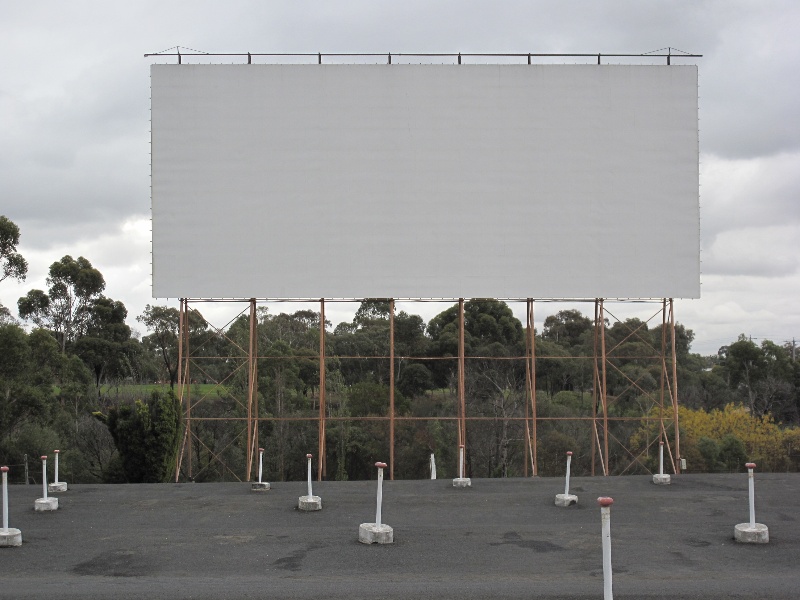

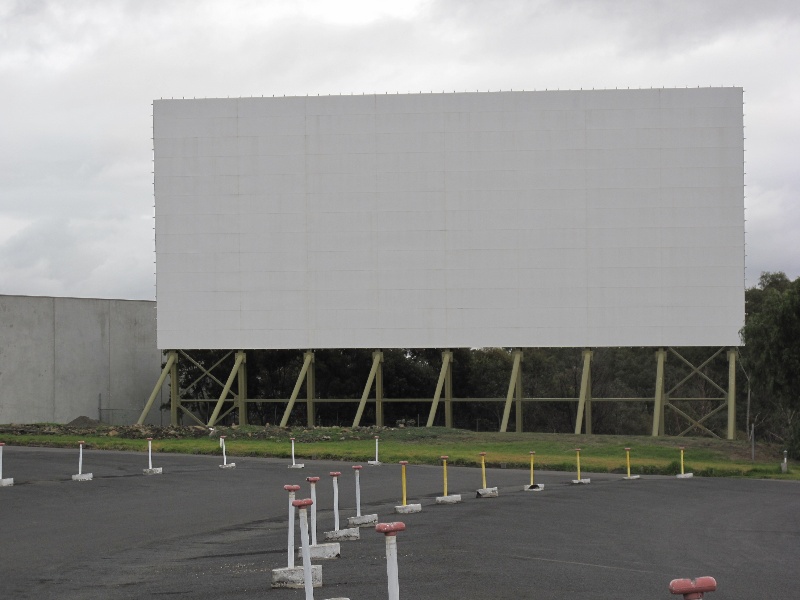
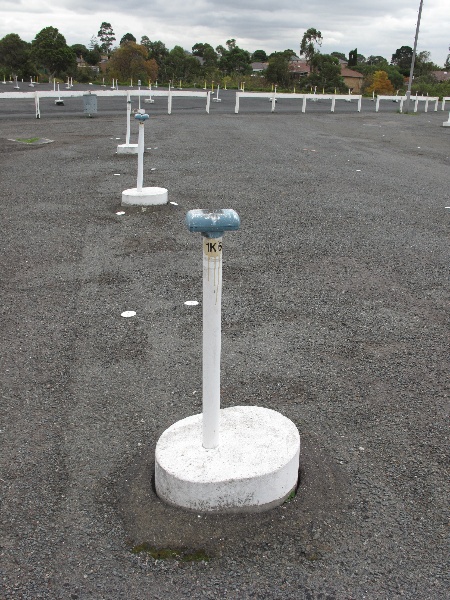
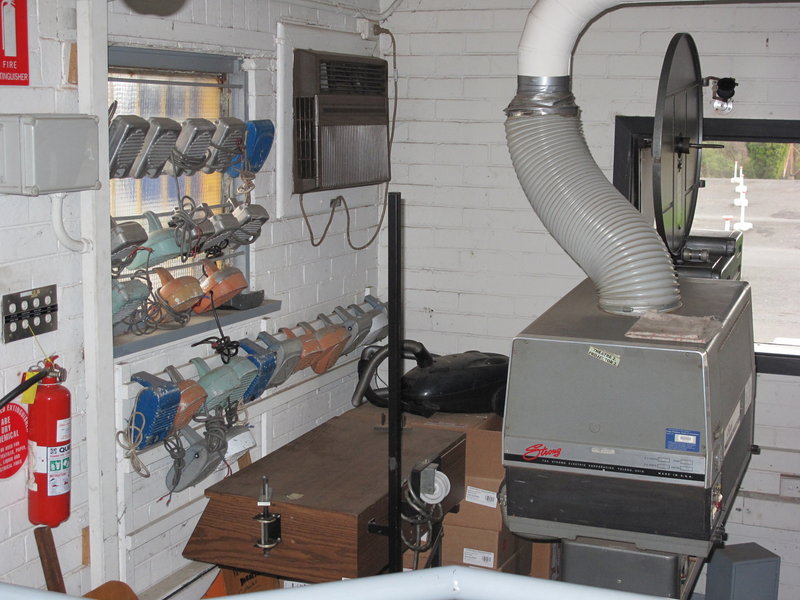
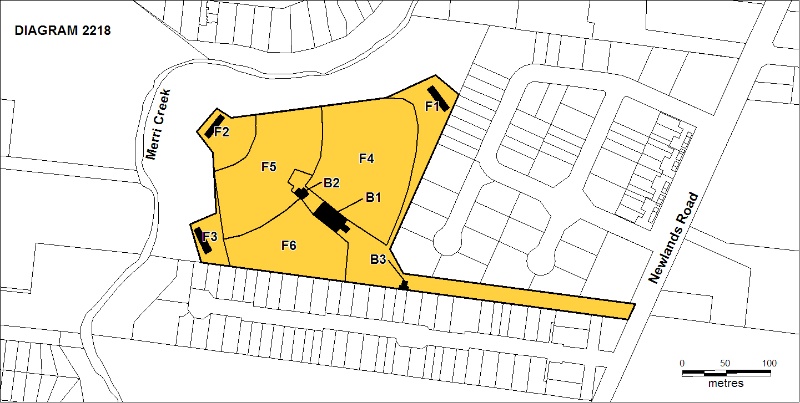
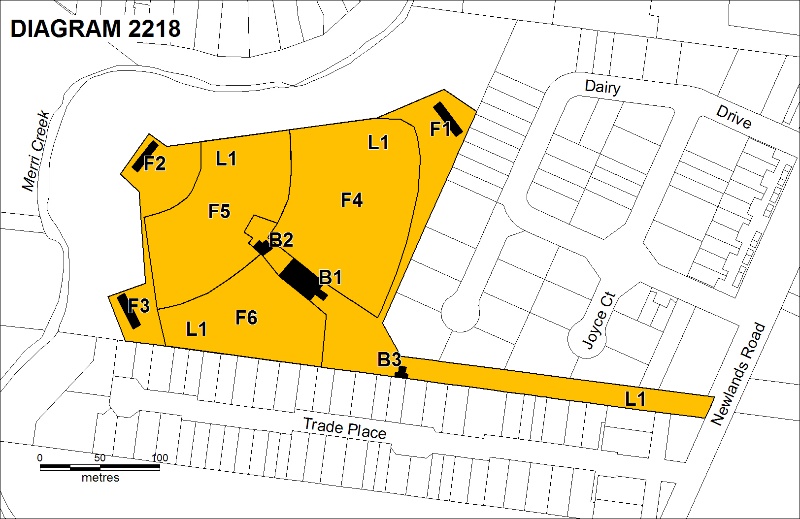
Statement of Significance
What is Significant?
The Coburg Drive-in cinema opened in 1965 as part of the Big 6 chain of drive-ins, under the direction of Sillman and Sharp, drive-in proprietors. Hoyts bought the drive-in in 1967 and operated it until it was closed 1984. Following the closure of all the other drive-ins in the northern suburbs of Melbourne, Village joined with Hoyts to re-open the venue in 1987, introducing a second screen. The drive-in remained successful, and a third screen was added in 1995.
The significance of the Coburg Drive-in is in the layout of the fields, berms and screens that immediately identifies the place as a drive-in cinema.
The site includes a diner, a projection building and a ticket box. These are utilitarian brick structures that date from the opening of the drive-in in 1965. The projection building was enlarged to accommodate another projector for the second screen installed in 1987 and was internally modified to include a raised platform for the third projector that was installed in 1995. These buildings contribute to the significance of the place, as they represent the usual component parts of a typical drive-in complex.
The layout of the drive-in has been adapted since 1965 due to the introduction of two screens. The single field of 1965 has been divided into three fields separated by white post and rail fences. Berms have been constructed in each field to elevate the noses of cars towards the appropriate screen. Sound was originally delivered to the cars via a small speaker that clipped onto a side window of the car. The speakers were attached to a post located to the side of each parking space. The old speakers have been removed but the posts remain.
How is it Significant?
The Coburg Drive-in is of historical significance to the State of Victoria.
Why is it Significant?
The Coburg Drive-in is of historical significance as a reflection of the mid-twentieth century rise of the influence of the car on Victorian society and culture. Along with motels, service stations and other places and urban forms associated with the rise in private car ownership, surviving drive-ins are significant for their association with the development of a car culture in Victoria during this period.
The Coburg Drive-in is of historical significance as a reflection of the Americanisation of Victorian cities and country towns in the 1950s and 1960s. Drive-ins were most popular in the United States, Canada and Australia. Inspired by American cultural trends, drive-ins functioned like mobile extensions of the family living room, and were consistent with a trend in personal behaviour to be less formal and inhibited in public spaces. Drive-ins grew out of the extraordinary popularity and increasing affordability of cars, and provided a novel and easy form of entertainment.
The Coburg Drive-in is significant as a rare surviving example of a drive-in cinema. It is one of three that remain in operation in Victoria out of approximately sixty at the height of drive-in popularity.
-
-
COBURG DRIVE-IN - Plaque Citation
Coburg Drive-In
Originally opened in 1965, Coburg Drive is a rare surviving example of a drive-in cinema. At the height of their popularity in the 1960s, there were about 60 drive-ins in Victoria.
Words: 32/180
COBURG DRIVE-IN - Permit Exemptions
General Exemptions:General exemptions apply to all places and objects included in the Victorian Heritage Register (VHR). General exemptions have been designed to allow everyday activities, maintenance and changes to your property, which don’t harm its cultural heritage significance, to proceed without the need to obtain approvals under the Heritage Act 2017.Places of worship: In some circumstances, you can alter a place of worship to accommodate religious practices without a permit, but you must notify the Executive Director of Heritage Victoria before you start the works or activities at least 20 business days before the works or activities are to commence.Subdivision/consolidation: Permit exemptions exist for some subdivisions and consolidations. If the subdivision or consolidation is in accordance with a planning permit granted under Part 4 of the Planning and Environment Act 1987 and the application for the planning permit was referred to the Executive Director of Heritage Victoria as a determining referral authority, a permit is not required.Specific exemptions may also apply to your registered place or object. If applicable, these are listed below. Specific exemptions are tailored to the conservation and management needs of an individual registered place or object and set out works and activities that are exempt from the requirements of a permit. Specific exemptions prevail if they conflict with general exemptions. Find out more about heritage permit exemptions here.Specific Exemptions:General Conditions: 1.
All exempted alterations are to be planned and carried out in a manner which prevents damage to the fabric of the registered place or object.General Conditions: 2.
General Conditions: 3.
Should it become apparent during further inspection or the carrying out of works that original or previously hidden or inaccessible details of the place or object are revealed which relate to the significance of the place or object, then the exemption covering such works shall cease and Heritage Victoria shall be notified as soon as possible. Note: All archaeological places have the potential to contain significant sub-surface artefacts and other remains. In most cases it will be necessary to obtain approval from the Executive Director, Heritage Victoria before the undertaking any works that have a significant sub-surface component.
If there is a conservation policy and plan endorsed by the Executive Director, all works shall be in accordance with it. Note: The existence of a Conservation Management Plan or a Heritage Action Plan endorsed by the Executive Director, Heritage Victoria provides guidance for the management of the heritage values associated with the site. It may not be necessary to obtain a heritage permit for certain works specified in the management plan. General Conditions: 4.
Nothing in this determination prevents the Executive Director from amending or rescinding all or any of the permit exemptions. General Conditions: 5.
Nothing in this determination exempts owners or their agents from the responsibility to seek relevant planning or building permits from the responsible authorities where applicable.Building Exteriors:
All external works to registered buildings, other than demolition works or works that increase the building envelope, are permit-exempt, including:. Modification of existing or introduction of new door and window openings as required.
. Replacement of roof cladding.
. External painting.
. Replacement, upgrading or introduction of new external signage.
. Replacement, upgrading or introduction of new externally mounted services, fixtures, lighting, and any other equipment and plant.
Building Interiors:
All internal works are permit-exempt.Screens:
All maintenance and repair works including the replacement of screen cladding as required are permit-exempt.Fields:
The following works to fields are permit exempt:. Repair and maintenance of the bitumen surface and kerbing and gutters.
. Painting of line and other marking on the bitumen surface.
. Relocation of speaker stands on the site.
New Structures:
The following works are permit exempt:. Construction of new light towers or poles.
. Construction of new structures to carry services or equipment associated with the operation of the place as a drive-in.
. Construction of new fixed or free-standing signage structures.
. Replacement of existing playground equipment or introduction of new playground equipment elsewhere on the site.
. Construction of new perimeter fencing.
. Construction of additional fencing within the site providing it is of the same or similar design to the existing (low brick and/or timber fencing).
. Introduction of outdoor seats and tables.
Minor Works:
Any Minor Works that in the opinion of the Executive Director will not adversely affect the heritage significance of the place may be exempt from the requirements of the Heritage Act. A person proposing to undertake minor works must submit a proposal to the Executive Director. If the Executive Director is satisfied that the proposed works will not adversely affect the heritage values of the site, the applicant may be exempted from the requirement to obtain a heritage permit. If an applicant is uncertain whether a heritage permit is required, it is recommended that the permits co-ordinator be contacted.Regular Site Maintenance:
The following site maintenance works are permit exempt:. Regular site maintenance works provided the works do not involve the removal or destruction of any significant above-ground features or sub-surface archaeological artefacts or deposits.
. The maintenance of an item to retain its condition or operation without the removal of or damage to the existing fabric or the introduction of new materials.
. Cleaning including the removal of surface deposits, organic growths, or graffiti by the use of low pressure water and natural detergents and mild brushing and scrubbing.
. Repairs, conservation and maintenance to plaques, memorials, roads and paths, fences and gates and drainage and irrigation.
. The replacement of existing services such as cabling, plumbing, wiring and fire services that uses existing routes, conduits or voids, and does not involve damage to or the removal or significant fabric.
Note: Surface patina which has developed on the fabric may be an important part of the item's significance and if so, needs to be preserved during maintenance and cleaning.
Note. Any new materials used for repair must not exacerbate the decay of existing fabric due to chemical incompatibility, obscure existing fabric or limit access to existing fabric for future maintenance. Repair must maximise protection and retention of fabric and include the conservation of existing details or elements.
COBURG DRIVE-IN - Permit Exemption Policy
The purpose of the Permit Policy is to act as a guide when considering or making decisions regarding works to the place. It is recommended that any proposed works be discussed with an officer of Heritage Victoria. The purpose of the permit exemptions is to allow works that do not impact on the heritage significance of the place to occur without the need for a permit.
Coburg Drive-in is significant as a rare surviving example of a drive-in cinema - places that reflect the rise of the influence of the car on Victorian society and culture; and the Americanisation of Victorian cities and country towns in the 1950s and 1960s.
The significance of the place is in the layout of the fields, berms and screens that immediately identifies it as a drive-in cinema. The site comprises a significantly modified layout and combination of original and later structures and features, reflecting changes in the operation of the place since its establishment in 1965. The further evolution of the place as a drive-in could occur without compromising its cultural heritage significance. Works that are directed at its ongoing operation as a drive-in cinema and which do not unacceptably obscure an understanding of the typical arrangement of the component parts are likely to be supported
Before a permit application is made, Aboriginal Affairs Victoria should be contacted to ascertain whether or not the activity requires the preparation of a Cultural Heritage Management Plan under the Aboriginal Heritage Act 2006.
-
-
-
-
-
FORMER NORTHCOTE CABLE TRAMWAYS SITE
 Victorian Heritage Register H2129
Victorian Heritage Register H2129 -
BROADMEADOWS 1
 Victorian Heritage Inventory
Victorian Heritage Inventory -
BROADMEADOWS 2
 Victorian Heritage Inventory
Victorian Heritage Inventory
-
Abruzzo Club
 Merri-bek City
Merri-bek City -
-
Albanian Mosque
 Yarra City
Yarra City
-
-









